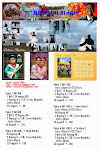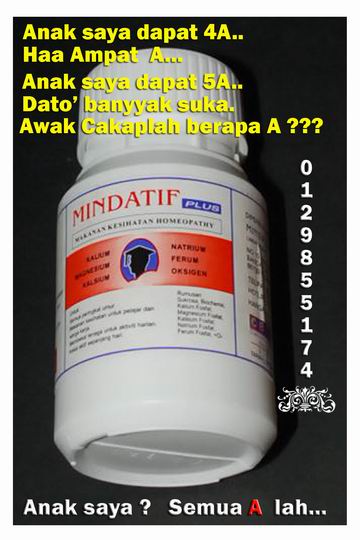This is so simple it often confuses people who think it's supposed to be complicated.
White Balance is nothing more than an adjustment to get the color you want. You set it to look good on the camera's LCD and that's it until the light changes. There is no right answer; it's what looks good to you.
That's right: I play with it till it looks good on the color screen on the back of my camera. SIMPLE!
Photos can look too orange, blue or green even if the subject looked OK to our naked eyes. Since we can preview the photos on our color LCDs setting white balance is easy.
Our eyes adjust this automatically just as they do for lightness and darkness. It would be great if cameras did this as well as our eyes do, but cameras often need a little help just like they do with exposure.
White balance settings may be altered for deliberate creative purposes exactly as we do with exposure.
You can change the orangeness or bluishness of your images to make them as warm, neutral or cool as you want without having to use glass filters. You even can get rid of the green cast from fluorescent lighting, all without the glass filters we need for film. Cool, huh?
Skip straight to the Application section unless you really care about the scientific details.
BACKGROUND
Just skip to Application if you just want to learn to make good photos. This section is only if you really care about the "why" behind all this.
Different kinds of light require different adjustments to give a good picture. If we consider full daylight as "normal," then indoor incandescent screw-in light bulbs look orange by comparison and candle light looks almost red. Likewise, blue sky without the sun is very blue although when you're in the shade everything looks OK to you and I. If you make a photo in the shade the picture comes out way too blue or cool looking.
This is because different kinds of light has different amounts of red, green and blue. Incandescent lights and candles have a lot of extra red because they make light by heating something hot enough to glow. Blue sky has a lot of blue because the sky appears to be lit by light scattering from assorted dirt particles and the various gas molecules which make up the atmosphere. This scattering effect, described by Rayleigh, varies as the fourth power of the wavelength. Fluorescent and metal halide lights have a lot of extra green because they make light by exciting ions of gasses made from dog poop which glow greenish.
Orange street lights are always going to look orange because they are orange. White Balance can make what looks white to us look white in photos, but it won't make orange white. More technically it's because these lights use sodium gas instead of dog poop and the sodium molecules create just one exact color (wavelength) of light at 589 nm which is that orange color. These low pressure sodium lights are deep golden orange and everything in them likewise looks a shade of that same color. They have no red, green or blue light to balance. High pressure sodium lights are the ones that look more whitish orange and things seen in them may have a teeny bit of color to them, but they still won't white balance.
DEFINITIONS
The silly phrase "White Balance" comes from professional video. Videographers make it tough and use a special kind of oscilloscope called a waveform monitor to match or "balance" the signals from the camera's red, green and blue channels to make whites look neutral under these different kinds of light.
In digital photography (and amateur video) we have it much easier. You can just press a button to make whites neutral, or let the camera do this automatically. It's also trivial to use this adjustment instead to make whatever colors you prefer.
Digital and video cameras have this adjustment and film cameras don't for the same reason dogs and cats lick themselves: because they can. Since digital and video cameras are electronic it's simple to set colors by adjusting each one separately. Film can't do this, since color film is processed all at once. This is why we need color balancing and conversion filters with film cameras and don't with digital.
Just forget about Kelvin temperatures since they are backwards compared to to photography and common sense. Kelvin degrees are the same as Celsius except that they are 273 degrees apart. (C = K - 273) This scientific classification refers to how hot something would have to be heated to glow the same color. Imagine your electric heater or range. At lower temperatures it's more red and gets oranger as it heats up. If it got to 3,200 degrees Kelvin (3,200K) you have the same color as a typical light bulb (and the heating element would explode). If you heated something even more to say 5,500 K it would be brighter and bluer and similar to daylight. Heat the thing up further to say 8,000K and it might be as blue as shade. Yes, the hotter Kelvin looks bluer or cooler, which is why you should ignore this unless you are a scientist.
APPLICATION
Basics
Different settings change the amount of orange or blue color cast, usually to compensate for any cast in the lighting. If you have no blue or orange cast you get neutral whites, which is what you usually get if you use the settings suggested by the instruction book. The Fluorescent settings take out the green from Fluorescent, mercury, HMI and metal halide lights used in your garage, sports stadia and parking lots. Forget about shooting under orange street lights: they'll always look orange because they are orange. White balance only adjusts far enough to make lights that look white to us look white in photos.
In the AUTO mode the camera makes its best guess for each shot. I use the AUTO white balance mode when I can. It works great in my Nikon D70 and Canon A70, but poorly in my Nikon D1H. Even though it may or may not work well for normal photos, AUTO (also called AWB in Canon) almost always works great for under weird mixed artificial lighting without flash.
AUTO (also called AWB) mode works OK with flash and indoors and outdoors. Usually the images will still be fairly blue in shade and pleasantly warm indoors at night. When the flash is on most cameras automatically switch to flash white balance.
The fun starts when you take it out of AUTO and set it yourself. Here's what the other settings do:
Tungsten (symbol of a light bulb also called "indoor"): Very, very blue most of the time except indoors at night, for which it looks normal. "Tungsten" is the name of the metal out of which the bulb's filament is made. Even indoors many people prefer the warmer AUTO setting. TRICK: Set -1 or -2 exposure compensation and use this setting in daylight to simulate night! In Hollywood we call this "day for night."
Daylight (symbol of a sun): Bluish normal. This is a little bit bluer than I usually prefer. Only use it for shooting test charts in direct sunlight.
Cloudy (symbol of a cloud): I prefer this. It's a little warmer than the daylight setting and best for most shots outdoors in direct sunlight. Why not the daylight setting? The camera manuals are written by engineers, not artists. The engineers are interested in copying color test charts, not making a good photo. I prefer things on the warmer side.
Flash (symbol of a lighting bolt): Almost identical to cloudy but sometimes redder depending on the camera. Use this the same way. On Nikons like the D70 you usually can set separate fine-tuned adjustments for each setting, so you can set different adjustments under cloudy and flash for quick access. This is optimized for the little on-camera flashes that tend to be blue, thus this setting tends to be warm to compensate. With large studio strobes you probably don't want to use this, since the images may be too red. Try the Daylight setting to match carefully daylight balanced studio strobes.
Shade (symbol of a house casting a shadow): Very orange. This is perfect for shooting in shade, since shade is so blue. It's also for shooting when you are under a cloud on a partly cloudy day since most of the light is coming from the blue sky. It's also for shooting in backlight, again since the subject is lit more by the blue sky instead of the direct sunlight. TIP: Some cameras skip this critical setting. If so, manually set the CUSTOM preset while in shade (also called one-push, Manual and white card and other things depending on manufacturer) and use this setting in place of the missing shade setting. TIP: I often use this mode even in direct sun when I want to make things look warm and inviting. Try it and you'll probably love it. The SHADE setting is a professional secret for getting great images, pass it on!
AUTO White Balance & SHADE White Balance


Example under ordinary shade. The skin looks much more warm and natural with the correct SHADE setting. I have never seen an AUTO setting that adjusts correctly for shade. These were made with a pocket camera.
AUTO White Balance & SHADE White Balance


Example under warm afternoon sunlight. I prefer the even warmer tones from the SHADE setting. These were made with a DSLR and an 81A filter.
Fluorescent (symbol of a long rectangle or Fluorescent tube): Use this if your photos are too green or under Fluorescent, mercury, HMI or metal halide lights as you might find in street lights. It will make other things look a bit purplish. With Nikons the fine-tuning adjustment (+-3) is much stronger in this setting and adjusts from fairly warm to fairly cool. Because of this you may not be able to get the exact color you want under Fluorescent lighting, in which case try AUTO or preset.
Fine Tuning (+3 to -3): Color is critical. The basic settings above get you close, but probably not exactly what you want. These fine adjustments allow you to get the exact amount of coolness or warmth. + is cooler and - is warmer. Nikons allow you to adjust this and remembers your preference for every setting while the Canons often skip this. Without the ability to fine tune these settings I find the Canon Rebel, 300D and 10D cameras not very useful. One can even fine tune Nikon's AUTO setting. Most photos on my D70 are made in AUTO -3.
Manual, Custom or Preset (sometimes a symbol with a dot and two triangles): This allows you to point the camera at something you want to be neutral and it makes it that way. Read the manual to your camera for specifics. Usually the camera sets itself to what's in front of you. Some cameras also can set themselves to something in an image shot previously. TRICK: Set it pointed at something colored or through a colored filter and your resulting photos will have a color cast opposite the color to which you set it! Set it on something blue and photos come out yellow, set it on something purple and the photos come out green. Point it at something warm and you get cool and vice versa. You even can buy specially tinted "white" cards for this and see examples here.
You use this setting if you have some weird light that otherwise you can't get to look good. I rarely use it, since auto does almost the same thing and makes it much easier.
MORE TIPS:
Indoor Sports
When shooting under fluorescent or mercury lighting the color of the light may actually change hundreds of times a second as the AC power cycles. This is no problem with long exposures. On the other hand shooting indoor sports this drove me completely insane till I figured this out. I was shooting at ISO 3,200 and 1/500 of a second. Exposures and color were very different from frame to frame and I had no idea why till I realized that the lights by design were flickering 120 times a second from the 60 Hz power. There is no way around this other than to retrofit the arena with high frequency ballasts for all the lights or otherwise replace or overpower the arena's lighting. We use high frequency ballasts for our HMI lights in Hollywood so we don't get beats with the 24FPS film cameras, but its expensive and not done in stadiums. Good luck!
Flash Indoors
What setting do you use for fill flash under tungsten light? If you use AUTO or Flash you'll get orange backgrounds and normal subjects, and this is pretty good. If you are shooting under fluorescents you'll get a nasty green background with normal looking subjects, not good.
If you change the white balance to tungsten or Fluorescent the backgrounds will look normal, but now the fill light on the subject will look blue or purple. Not good.
Here's the trick from Hollywood: you need to gel (filter) the flash to match the ambient light and then set the white balance for that ambient light. Now everything will look normal. You could gel all the ambient light to match the flash instead, but that's a lot more work since there's a lot more lights. In Hollywood movies we'll spend a day gelling all the different kinds of lights and even gel set windows to make outdoors match tungsten. (The funny part is Hollywood is still based on gelling everything to tungsten, since that's the film we shoot, but almost no lighting is tungsten anymore.)
The best place to buy gel filters, which are just colored sheets of plastic, is your local theatrical stage and lighting supply store. They are a couple of feet on a side and cost a few bucks each. You cut them with scissors and tape them where you need them. Popular brands are Roscoe and Lee. You can get a free sampler from these stores to try out which color works best before you blow a whole few bucks on a full size filter. In the stage world we worry about selecting from among the hundreds of colors they offer. Get the book for cinegels color conversion and correction filters.




No comments:
Post a Comment